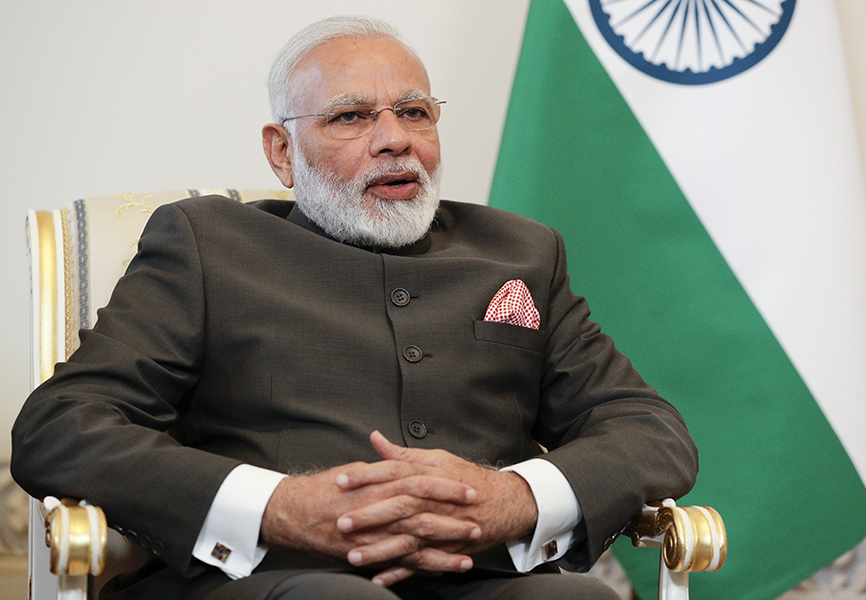how the Trump-Modi conclave will go (Other than the handshake)
Prime Minister Narendra Modi is set to arrive in Washington, D.C. for his first in-person meeting with U.S. President Donald Trump on Monday, June 26. The timing for the visit could not be worse. Given the distraction of the Russia investigation, with new revelations emerging by the day, India has been less of a priority for Trump's administration. And Modi has his own problems at home riding with him during the visit, from monetary policy to a fledging national airline.
But this could turn out to be a blessing in disguise, for both leaders as they get to turn the attention away from their current headaches. Years of visits between leaders of both nations have been high on rhetoric, but short on deliverables, and we should expect nothing different this time. But lowered expectations can pay off.
Modi comes to DC with three goals:
First, to ensure that India is on the U.S.'s radar, and that the new U.S. administration maintains policy continuity with the last one.
Second, Modi intends to influence Trump where possible, and to bring Trump's policies in line with India's views and concerns in the region - namely, in Pakistan.
And third, Modi is aiming to deepen the US-India security partnership.
Modi intends to influence Trump where possible, and to bring Trump's policies in line with India's views and concerns in the region - namely, in Pakistan.
Accordingly, there will be limited appetite to discuss H-1B visas or Trump's recent claims that India unfairly benefits from the Paris climate agreement. While these issues undoubtedly rankle Modi, he has little to gain from rebuking Trump. Instead, the bigger question is how committed Trump will be to India.
Since his inauguration, Trump has filled few of the key India-focused appointments in his government. As a result, engagement with the new U.S. administration has been light. The Trump White House has not paid much attention to India, leaving some to wonder if this is a replay of past administrations. Both George W. Bush and Barack Obama came into office initially letting U.S.-India relations slide by giving aid and weapons to Pakistan, in the name of fighting terror. Yet both Trump's predecessors turned things around and left office with a significantly deeper partnership with New Delhi.
Will Trump follow suit?
Modi cannot afford to wait and find out, as China and Pakistan's deepening security arrangement raises geopolitical tension in the region. India needs a series of strong and dependable partnerships that can augment the country's security needs. The era of non-alignment is over, and Modi knows this. While a formal alliance with the U.S. is not realistic just yet, deepening the quasi-alliance of their “strategic partnership” is.
So, Modi will arrive at the White House with a full-on charm offensive aimed squarely at Donald Trump. He'll also look to leave with a commitment from Trump that his administration is as focused on India as earlier ones had been.
And here a limited awareness of, and the dearth of personnel dedicated to, the region can be a unique advantage for Modi. Unlike past presidents, Trump is still impressionable with respect to South Asia. While he may have had business dealings in India, he stepped into the Oval Office with no experience on sensitive policy issues affecting the subcontinent.
Unlike past presidents, Trump is still impressionable with respect to South Asia.
Modi will leverage the new US administration's deprioritization of India to his advantage by strongly advocating New Delhi's views on security challenges in South Asia, particularly terrorism emanating from Pakistan, and the deepening China-Pakistan alliance.
Given Trump's position on terrorism and on China, Modi is likely to find an eager audience on both topics. And visiting the U.S. president so early in his term allows Modi to form the clay of Trump's South Asia foreign policy.
The third and final goal for Modi will be to vouch for support of India's self-defense efforts.
But a closer partnership may mean that Modi will have to give a little to get a little. Specifically, he may have to give a bit more on support for the U.S.'s war against the Islamic State. While this will not mean India commits troops, it could take the form of closer intelligence cooperation. That, I suspect, should be easy enough for Modi to agree to.
Modi comes to the White House with specific objectives for his meeting with Trump – and there is room for cooperation. But the ultimate wild card will be sitting across the table, and Trump's response will set the tone for U.S. - India relations in the months and years to come.
Shailesh Kumar is a senior analyst in Eurasia Group's Asia practice
Alex Gibson, digital editor, edited this article and produced the accompanying video

 Modi intends to influence Trump where possible, and to bring Trump's policies in line with India's views and concerns in the region - namely, in Pakistan. REUTERS
Modi intends to influence Trump where possible, and to bring Trump's policies in line with India's views and concerns in the region - namely, in Pakistan. REUTERS